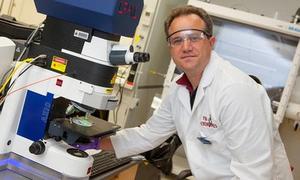Nuclear wasteObscure element shows promise for nuclear waste storage
One of the least known elements of the periodic table, californium, may hold the key to the safe and effective long-term storage of nuclear waste, according to new research. The researchers have demonstrated that californium (Cf) has an “amazing” ability to bond and separate other materials, as well as being extremely resistant to radiation damage.

Professor Thomas Albrecht-Schmitt, Florida State University // Source: fsu.edu
One of the least known elements of the periodic table, californium, may hold the key to the safe and effective long-term storage of nuclear waste, according to new research from Florida State University.
An FSU release reports that the research from chemists at that university has demonstrated that californium (Cf) has an “amazing” ability to bond and separate other materials, as well as being extremely resistant to radiation damage.
“It’s almost like snake oil,” stated lead researcher Professor Thomas Albrecht-Schmitt. “It sounds almost too good to be true.”
Albrecht-Schmitt says that the discovery should help researchers to design new and more effective storage containers for radioactive waste, as well as helping in the separation processes of radioactive fuel, thus allowing for greater fuel recycling.
“This has real world application,” he reiterated. “It’s not purely an academic practice. We’re changing how people look at californium and how it can be used.”
Cost may be an issue, though. Californium is relatively expensive (Albrecht-Schmitt notes that the five milligrams used in this research cost $1.4 million), but not much of it may be necessary.
— Read more in Matthew J. Polinski et al., “Unusual structure, bonding and properties in a californium borate,” Nature Chemistry (23 March 2014) (doi:10.1038/nchem.1896)
